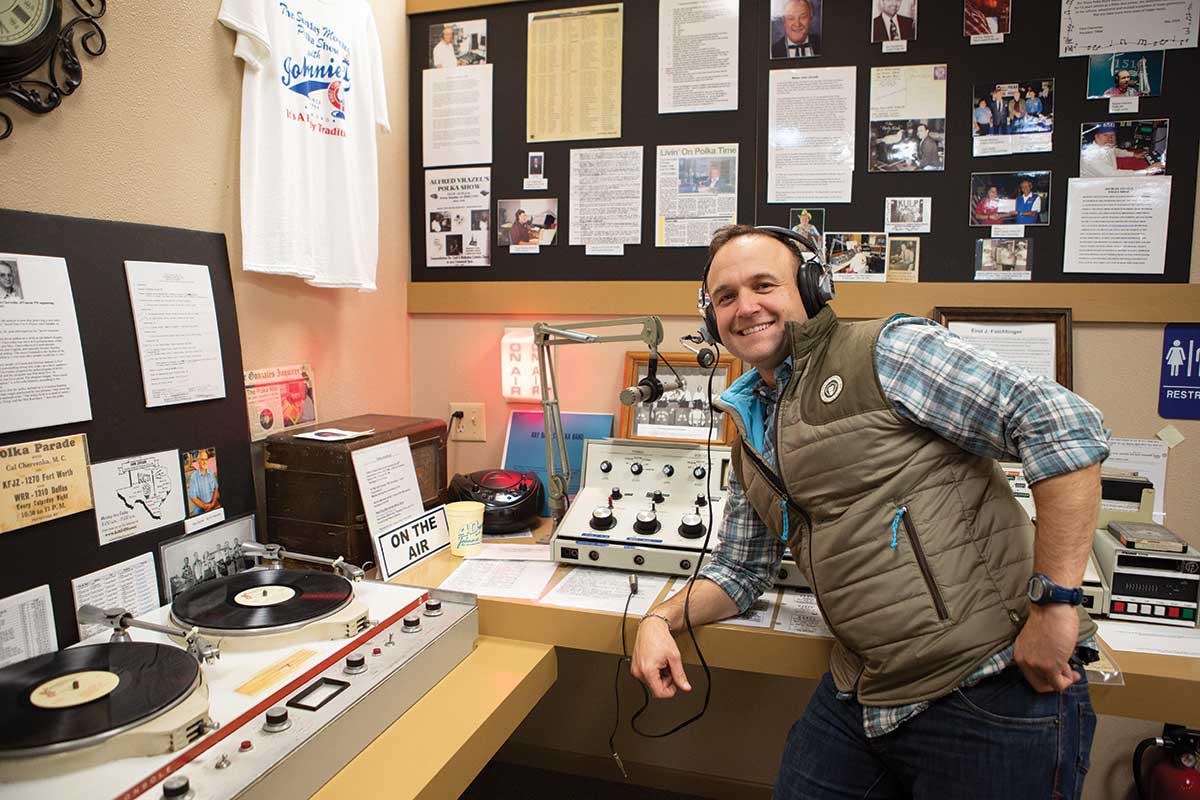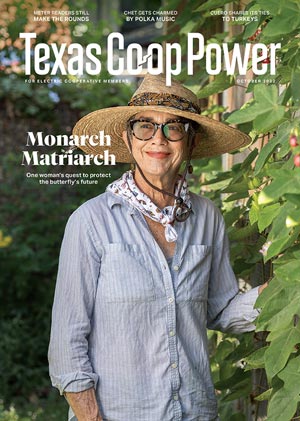If you pass through the rolling prairies northeast of San Antonio and listen carefully to the wind, chances are you’ll hear the faint sound of a tuba and an accordion floating along. Follow the sound to its source and you could end up in any of dozens of old German and Czech dance halls as polka bands play the music of their ancestors.
Since the late 1800s, polka has been the soundtrack of life for many residents of Fayette County. To learn more about how this unique musical style keeps the beat, I headed to the Texas Polka Music Museum in downtown Schulenburg.
I stepped into the small repository on Lyons Avenue and immediately felt my feet bouncing to the signature “oompah-oompah” playing on the speakers. I was helpless to repel the power of the polka. The walls are covered in pictures, records and stories of the numerous polka artists who have hailed from the Lone Star State—bands like Vrazel’s Polka Band, which toured Texas for more than 50 years.

Chet takes in the polka grooves that resonate in Fayette County.
Courtesy Chet Garner
There are also dozens of cases and displays filled with instruments and mementos going back well over 100 years, including booths from local radio DJs that kept the polka power going around the clock. Of course, any proper polka band needs an accordion, tuba and saxophone. But just as important are the matching outfits. This museum has some that would give Elton John a run for his money.
Like most folks, I don’t listen to a lot of polka music, but after visiting this museum, I discovered a newfound appreciation for the art and culture of polka. I even bought a CD so I could oom-pah-pah all the way home.


